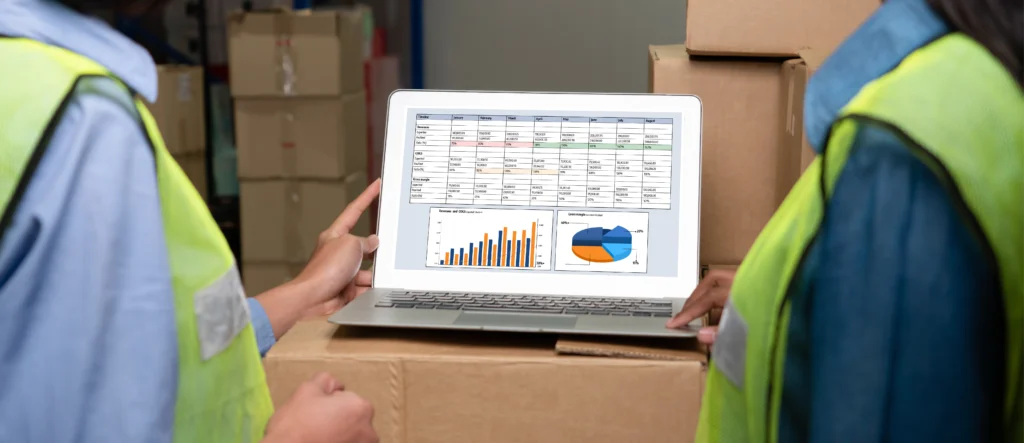Imagine you are running an ice cream store in a theme park in the middle of summer. During the day, many people visit the park and, naturally, they want to cool off with a delicious ice cream. Now, this is where peak demand comes into play.
A peak demand is a period when the number of people wanting to buy a product or service increases significantly compared to the rest of the time. Continuing with the ice cream store example, peak demand would occur during the hottest hours of the day, when people are looking for a way to relieve the heat.
These demand peaks can be the result of different factors, such as weather, special events, holidays or promotions. When peak demand occurs, the number of customers coming into your store looking for ice cream increases rapidly. This can be a great opportunity to make more money, but it also poses challenges.
One of the main challenges is to make sure you have enough resources to meet that sudden demand. Going back to the example, if you don't have enough ice cream ready or enough staff to serve all the customers, you could face problems. Some customers might get frustrated if they have to wait a long time, while others might decide not to buy at all if they see a long line.
Therefore, it is important for companies to be prepared to handle these peaks in demand effectively. This could involve planning ahead, having sufficient inventory or additional staff available during times of high demand. By doing so, you can make the most of these opportunities without sacrificing customer satisfaction.
Peaks in demand are times when the number of people who want to buy something suddenly increases. They can be a boon for businesses, but they also require careful planning to meet customer needs and maintain good service.
What is demand planning?
Demand planning is a strategic process in business management that involves forecasting and anticipating the quantity of products or services that customers will purchase in the future. This planning is based on historical data, market trends, seasonal events and other relevant factors. The main objective of demand planning is to ensure that a company has sufficient inventory or production capacity to meet customer needs efficiently, avoiding both out-of-stocks and excess inventory.
Demand planning often involves collaboration between different departments within an organization, such as sales, marketing, logistics and production. It can also involve the use of specialized tools and software to analyze historical data and forecast future trends.

You might be interested in: Learn I 7 disruptive technologies that are revolutionizing the logistics industry.
What happens to deliveries in these demand peaks?
Delivering on time in an e-commerce business is critical to keeping customers happy and building a positive reputation. Here are some tips on how to achieve this:
- Set realistic deadlines: Make sure the delivery times you offer on your website are realistic and achievable. It is better to surprise customers by delivering earlier than promised than to disappoint by not meeting the estimated date.
- Choose reliable shipping partners: Work with reliable and experienced shipping or courier companies. Do your research and choose options that have good reviews in terms of on-time delivery and customer service.
- Automate the shipping process: Use order and shipment management systems that allow you to automate part of the process. This can include automatic generation of shipping labels, package tracking and status updates for customers.
- Monitor inventory in real time: Keep precise control of your inventory and use systems that alert you when a product is close to running out. This will help you avoid selling products that you can't deliver immediately.
- Offer flexible shipping options: Provide your customers with several shipping options, such as standard, express or trackable. This will allow them to choose the speed and cost that best suits their needs.
- Communicate clearly: Send order confirmations and status updates via email. Provide a tracking number and link so customers can track their package in real time.
- Plan for periods of high demand: During special events, promotions or high-demand seasons, make sure you are prepared to handle a higher volume of orders. Increase your resources if necessary and communicate possible delays to customers in advance.
- Offer efficient customer service: Have a customer service team available to respond to customers' questions and concerns about their orders and deliveries. Responding quickly and resolving issues demonstrates your commitment to customer satisfaction.
- Constantly evaluate and improve: Track your on-time delivery rates and collect customer feedback. Use this information to identify areas for improvement and make adjustments to your shipping process.
- Consider warehousing close to the customer: If possible, use distribution centers or warehouses strategically located near your customers to speed up delivery times.
Delivering on time in an e-commerce business requires a combination of planning, automation, effective communication and collaboration with reliable partners. Keep a constant focus on customer satisfaction and look for opportunities to optimize your shipping process.

Also read: Financial Plan for your Ecommerceclogistica.mx/2022/12/16/why-should-I-do-control-of-my-inventory/
And if you've made it this far, here are 5 strategies that can be applied in any type of business to meet peak demand:
- Plan ahead: Anti cipate times when peak demand is likely to occur, such as holidays, special events or high consumption seasons. Based on that information, plan ahead by increasing your resources, inventory and staff to meet the increased demand.
- Cross-departmental collaboration: Encourage collaboration between different departments in your company, such as sales, marketing, operations and logistics. Communicating and working together can help you anticipate and address peaks in demand more effectively.
- Supply chain flexibility: Establish strong relationships with your suppliers and maintain open lines of communication so you can adjust your orders and deliveries according to fluctuations in demand. Supply chain flexibility will allow you to respond quickly and efficiently to changes in demand.
- Automation and technology: Use automation systems and advanced technology to optimize inventory management, ordering and shipping processes. Software solutions and management systems can help you make informed decisions and streamline procedures during times of high demand.
- Additional temporary staff: Consider hiring additional staff during peak demand. This could include customer service, production, logistics and other relevant roles. Having more hands available will allow you to serve your customers more efficiently and avoid delays.
Remember that every business is unique, so it is important to adapt these strategies to your particular situation. Maintain a focus on customer satisfaction and the ability to deliver high-quality products and services, even during times of peak demand. At ABC Logistics we integrate and implement many of these strategies with our customers for the sole purpose of providing quality service and adding value to your business.





